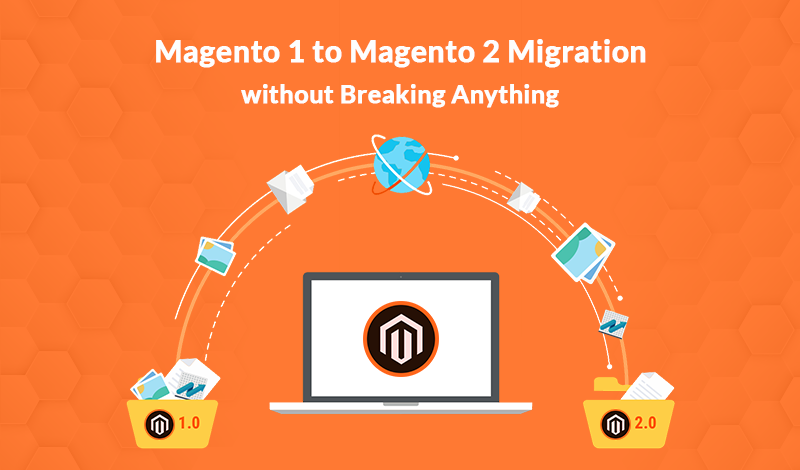With forecasts indicating an 18% increase in e-commerce spending in the United States alone, your company should put more attention on its user interface and optimize the overall shopping experience for your customers. Increasingly, people are buying things online, which has pushed companies to develop eCommerce Websites and apps for small businesses. Platforms like Magneto are great platforms for businesses to flourish and nurture their brand while looking out for functionality and structure simultaneously.
What are Magneto 1 and 2?
Launched in 2008, Magneto 1 was originally an open-source platform targeting small and medium enterprises. Over the years, it has grown to control a major chunk of e-commerce heavy SMEs. Magneto’s platform – comprising of three variations currently – provides a playground for developers to continuously develop, tweak, and update extensions and features. It is a great resource for developers and businesses alike that wish to adapt to a business solution that they can control and customize simultaneously.
Updated in 2014 as Magneto 2, the newer version of this software received mixed reviews in its initial phase. While the complaints that users had with its former version were fixed, the latter version came with a number of other unprecedented issues, including speed, installation difficulties, and change of interface, which required additional training. However, when Adobe acquired Magneto in 2018, it introduced a number of performance updates and changes in its interface to satisfy user complaints.
What to Get Done in Magento 2 Migration
Before the actual migration process begins, a developer should consider and implement the following groundwork to ensure a smooth transition:
- A complete backup of your Magneto 1 store is absolutely necessary. This backup should include all files, folders, and drives.
- Completing a self-analysis of your current store in eminent. Unnecessary data should be eliminated before the migration begins.
- Placing a clone of your current Magneto 1 store for the migration phase is recommended. The migration should not take wings on a live store.
- Checking the compatibility of your current store’s themes and extensions with Magneto 2 is necessary.
- Setting up a copy of your Magneto 2 store on the same server as its predecessor is necessary.
What You Need To Know About the Magento 2 Migration Process
In order to smoothly transit, you first need to know what the migration process entails. The migration process from Magneto 1 to Magneto 2 includes four main stages, namely, which are: Theme Migration, Extension Migration, Customization, and Data Migration.
The first stage in the migration process is Theme Migration. As a developer, you need to understand that you cannot magically migrate your previous theme from Magneto 1 to Magneto 2. Rather, you would have to create a brand new theme in Magneto 2 and format it to be receptive to your previous theme.
The second stage in the migration process is Extension Migration. Extensions are integral components that determine functionalities in your online store. In this stage, as a developer, you will install the required Magneto 2 extensions. It is to be noted that your Magneto 1 extensions will not be operational on its latter released counterpart.
The third stage in the migration process is Customization. In this stage, the custom code used in your Magneto 1 profile is migrated on Magneto 2 through a code migration toolkit. However, due to certain differences in the two versions, you would be required to do some additional tweaking to make the custom code functional.
The final stage in the migration process is data migration. This stage involves shifting your settings from Magneto 1 to Magneto 2 using a data migration tool. By making use of CLI commands, you can migrate data from your storage to the newer version with ease.
How SEO Analysis Is Linked With a Smooth Migration
While migrating from Magneto 1 to Magneto 2, you could potentially lose traffic to your website. In order to avoid this, as a developer, you should carry out a thorough SEO analysis. The below SEO thing you have to consider during Magento 2 Migration.
1. Google Analytics
While studying your Google Analytics, you should check for the web pages that bring the most traffic to your website. Doing so helps you identify the web pages that are most important and can be given extra care and attention during the migration process.
2. Google Search Console
While studying your Google Search Console Data, you should check for high performing keywords for your website. Doing so helps you identify important keywords, their impressions and allow you to retain them during the migration process.
3. 404 Errors
By accessing the index coverage section, you should check for any 404 errors and fix them prior to beginning your migration process.
4. Robots.txt Files
By adding /robots.txt before your home page URL, you can check if any robots.txt files are blocking any other media files.
5. Sitemap.xml Files
By adding /sitemap.xml right after your home page URL, you can check whether or not the sitemap.xml is updated and integrated with your website.
6. Canonical Tags
All static web pages on your website should have canonical tags set and assigned.
7. Meta Tags
It is highly recommended not to change your Meta tags during the migration process, as doing so could affect your SERP.
When Should You Upgrade To Magneto 2?
Whether or not you should upgrade to Magneto 2 depends upon a number of factors. You need to migrate firstly depends upon whether or not your website is performing well in terms of functionality and sales. If you are performing well in both contexts and your software version isn’t too old, a migration to Magneto 2 is not for you – at least in the near future.
However, if you operate on an old version and have to take the help of installed third-party extensions, it is imminent that you migrate to Magneto 2 and update your website and user experience. Talk with our Magento 2 Migration experts team.
Conclusion
Magento 2 Migration can be a daunting task for developers – especially if they are doing it for the first time. In order to ensure a smooth Magento 2 Migration, developers need to first acquaint themselves with the characteristics of Magneto 2 and learn the differences between both platforms.
Myrah Abrar is a computer science graduate with a passion for web development and digital marketing. She writes blog articles for ApCelero.





Leave a Reply